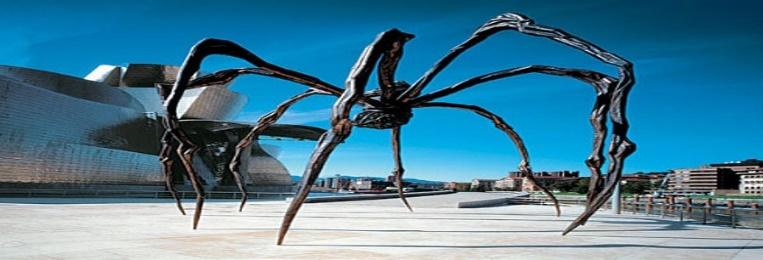
Louise Bourgeois was born on December 25, 1911. As a child, she witnessed her father’s infidelities. This situation irreparably crippled her and became the impetus for the beginning of artistic practice. Louise’s creative path began with Sorbonne, which she entered in 1932 and studied philosophy, mathematics, and geometry. Soon the circle of her interests changed. In 1937 she was admitted to the Académie de la Grande Chaudière, where the legendary cubist painter Fernand Léger, drew attention to her sculptural talent. At the beginning of her artistic career, the Bourgeois was involved in drawing and painting. In the 1940s, she concentrated on sculpture; her work is a veritable anthology of twentieth-century art: cubism, surrealism, abstractionism, and conceptualism.
The sculpture is named ‘Maman’ and is 10 meters long and wide. It was made in 1991 from bronze, marble, and stainless steel. The statue is deeply personal because Louise Bourgeois likens the spider to her mother, who was a weaver. For the author, this animal is associated with hard work and symbolizes motherhood (indicated by laying eggs on the spider’s belly). At the same time, the result is ‘public in its aesthetic format.’ It is a symbol of gigantism, to which modern era art is steadily gravitating.
I like this sculpture because the spider image perfectly conveys the author’s idea. The spider looks graceful (despite its size) and formidable, perhaps, it is a mighty female solid image. She is both a protector of her children and a threat to men. I believe that this work reflects all of the author’s childhood fears. It evokes sympathy and empathy for the sculptor’s problems.
Works Cited
Bourgeois, Louise. Maman. 1999. The Guggenheim Museums and Foundation, New York. Guggenheim Bilbao Museoa. Web.